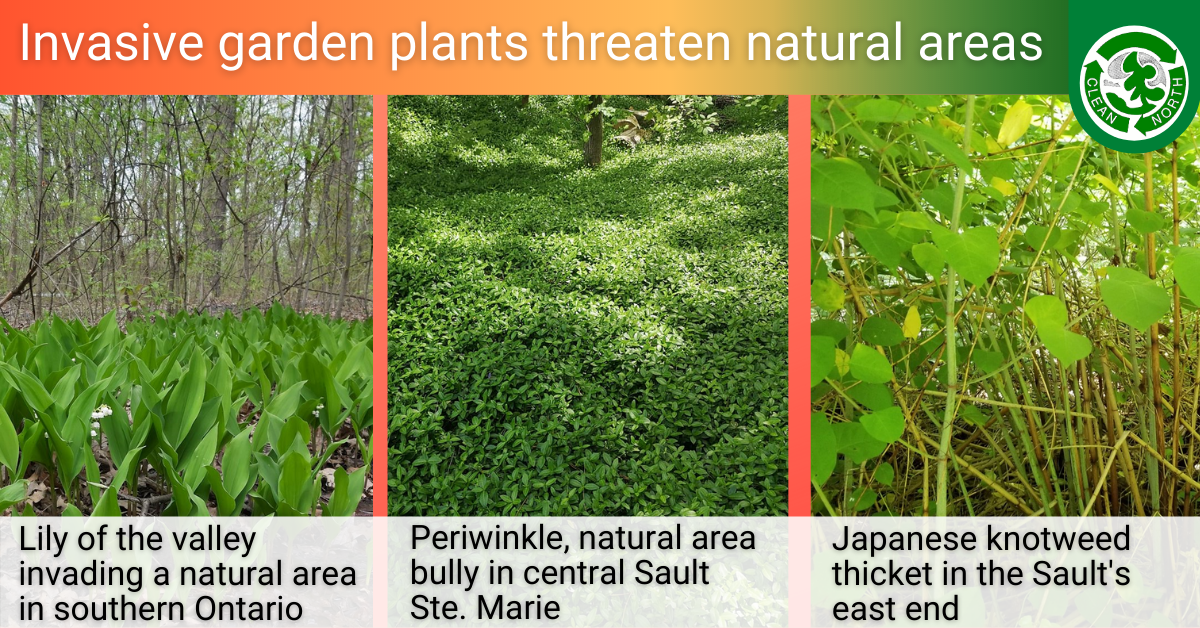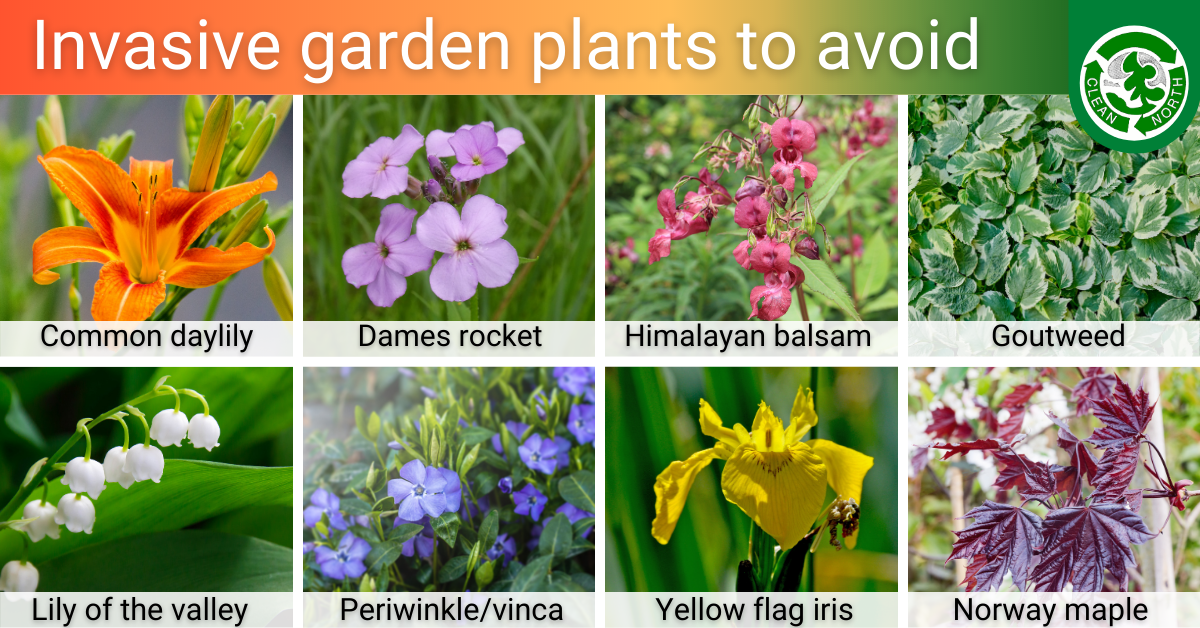
You’d be hard-pressed to find a gardener who thinks it’s ok to allow purple loosestrife, garlic mustard, or dog-strangling vine to flourish in their yard. But when it comes to some other garden plants known to be invasive—goutweed, common orange daylily (aka ditchlily), lily of the valley, periwinkle, Himalayan balsam, barberry, or norway maple—many gardeners get defensive. They push back against the idea that they are putting ecosystems at risk by keeping these plants.
Some common responses…
- “It’s well-behaved in my yard.”
- “I have no trouble keeping it corralled.”
- “Who says it’s invasive? It’s not invasive!”
- “But it’s my favourite flower!”
- “There’s a role for this plant in certain situations.”
- “It might be invasive elsewhere, but it’s not invasive here.”
It’s understandable. We humans are programmed to resist change, and we don’t like being told that we might be doing something wrong. It took decades to convince people that smoking causes cancer.
The cold, hard truth about invasive garden plants: They hurt ecosystems
The evidence is overwhelming: Invasive plants hurt ecosystems and can actually destroy them. They do this by crowding out native plants, and the loss of native plants causes loss of food and habitat for native birds, pollinators, and other wild critters.
Some invasive plants (like garlic mustard) can even change soil properties in a way that hurts trees. And at least two invasives are suspected of being trap plants for endangered butterflies: There are reports of monarch butterflies laying their eggs on Himalayan balsam and of West Virginia white butterflies laying their eggs on garlic mustard. All caterpillars hatching on a non-host plant will die.
Finally, dealing with the fallout from plant invaders can be very costly for municipalities and homeowners. European common reed can overwhelm shoreline areas—changing water levels, destroying aquatic habitat, and interfering with boat navigation. Japanese knotweed can damage driveways and foundations.
None of us is an invasive plant whisperer
Let’s be realistic. None of us has magical powers to limit the spread of invasive garden plants. You may have goutweed or ditch lilies corralled for now, but if you move, and the next owners of your house may dig up your invasive plants and give them away or sell them. In fact, invasive plants are often found for sale on Facebook Marketplace because they grow so fast and need to be thinned out regularly.
Invasive species also produce seed, and their seed can be spread to new locations through mud on the feet of people and pet, by wind and water flow, and by birds. A small piece of root tracked from your yard into a natural area can wreak havoc. One of our volunteers has been in a natural area in Michigan in which the entire understory was barberry from seeds dropped by birds.
And finally, if a plant that is invasive in other places doesn’t seem to have invaded natural areas here yet, that’s not proof it’s safe. It just means it hasn’t had a chance to spread yet. Why would we choose to take the risk knowing it could conquer our natural areas?
The Sault’s invasive plant situation
Here in Sault Ste. Marie, we have entire natural areas being overtaken by periwinkle. It’s a huge loss for our urban biodiversity.
Another common invasive is Himalayan balsam. This one has exploding seedheads, and each plant can shower 800 seeds up to 5 metres away! Many people who grow this plant insist it’s worthwhile because it’s pretty and some pollinators like it.
But why would you keep an invasive plant that can completely take over a natural area when there are wonderful native or non-invasive alternatives?
Why plant Himalayan balsam when swamp milkweed is a native plant that supports the endangered monarch butterfly?
Why plant norway maple, the crown of which is an ecological desert that supports no native birds or insects, when you can plant native sugar or red maple?
Why plant yellow archangel, when you could plant wild ginger, foamflower, and/or trout lilies?
We need our biodiversity!
The loss of our native ecosystems, including in urban areas, matters. We need to hang onto as much biodiversity as we can especially as we face the spectre of climate change.
So please:
- Whenever possible, choose native plants for your garden
- Brush up on which garden plants are invasive
- Remove and bag the invasive plants in your yard and put them in the trash
- Never give away or sell plants considered invasive
- Be cautious about receiving plants from other people — make sure an invasive has not hitched a ride

Want to know more?
- Sault/Algoma Grow Me Instead Guide
- List of invasive plants
- Now is a GREAT time to remove invasive plants
- Article about invasive garden plants on the Halton Region Master Gardeners website
- Understanding Ontario’s native, invasive, and aggressive plants
- A Landowners Guide to Managing and Controlling Invasive Plants in Ontario
You can also email us questions at info@cleannorth.org.




